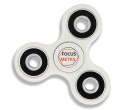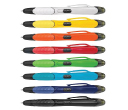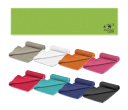Feng Shui Colour Concepts
If you have been keeping up with our office Feng Shui series here on our blog (and we hope you are enjoying our tips), then you know that we have covered the Do’s and Don’ts of Office Feng Shui, Putting the Elements of Feng Shui to work for you, How Plants Help with a serene office space and purified indoor environment, and How Feng Shui can help remove the clutter from your office space too. Our office has greatly benefitted by applying some of these easy techniques and we hope that you have done the same. So, this got me thinking on how Feng Shui principles can also help your business and make it appealing to customers as well. A few weeks ago we featured an article on how colours affect your logo, and there is a connection with the Feng Shui of colours that can tie into the psychological effects of colours and the impression that customers or potential customers can get about your brand based on the colours used. If you have customers that come into your office, or your place of business, consider some of these Feng Shui principles on colour:
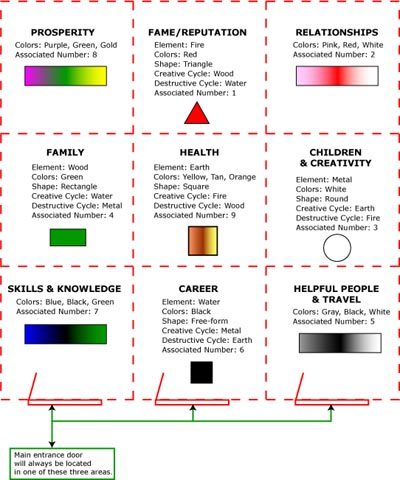
The image above is a Feng Shui Baqua map. Pronounced[ba-gwa], this is a map, or blueprint of where the Feng Shui elements should be displayed in the office or business in order to promote the different life situations, or goals, that you wish to focus on.Each of the nine areas on the map also list the colors that should be associated with those life situations.
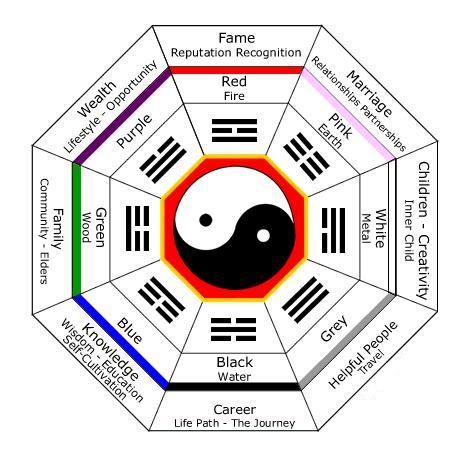
Each of the five elements of Feng Shui are also associated with a colour.
- Fire is usually represented by the colour red, but other shades of the red family can also be used, such as pink, maroon, and orange.
- Earth is represented with muted hues such as olive green, brown, burnt orange, mustard, granite, stone and any other shades inspired by nature.
- Water is usually associated with the colour blue, but for Feng Shui, the principles are slightly different because blue is not a popular colour in Chinese culture. Therefore, the water element is often represented by black, dark grey, and deep blue.
- Wood is represented by the colours purple, green, and brown. This distinction separated it from running into the colours that would represent Earth elements.
- Metal is represented by using grey or silver (choose one or the other), and white and gold.
When it comes to decorating your office, showroom, or store, the colour associations are slightly different than the element associations. Here are what the colours used for decorating mean for Feng Shui:
- Blue is calming a cool. However, in Chinese culture it is associated with mourning. In the Western World, however blue usually mean healing and is used to relax clients and customers and can also represent healing, trust, faithfulness, and stability.
- Purple can convey images of dignified, royalty, spirituality, and vitality.
- Red is used to banish negative Chi, but it is advised that red is used in moderation. It can increase aggressiveness and hyperactivity and is associated with celebrations. It can represent love and passion; however it can also mean anger and is a universal symbol for stop. Red, as used in designing can make objects look larger and stand out more.
- Black can mean strong, but it can also be interpreted as evil or death. According to Feng Shui principles, black should not be used in businesses that want to appeal to children or therapy offices.
- Green represents hope, growth, and energy. It is a positive colour and is good for appealing to children or for use in decorating therapy rooms.
- Yellow is bright and optimistic and in designs it represents wisdom and understanding. It is said to stimulate the brain and even aid with digestion.






